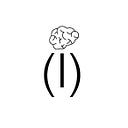Understanding Anxiety — A self-reflection
Anxiety. Also known as the body’s natural response to stress. Feeling nervous, restless, feeling panicked. Sweating, trembling, acid reflux, hyperventilation. Yes, we all feel anxious at times, but these symptoms of anxiety are much more intense, also known as Anxiety disorders.
I have suffered from severe anxiety throughout my teenage years. However, the progress I have made, thanks to the various psychologists, therapists, and medications, has placed me in a better position to discuss this subject today.
At the same time, when I was still a teenager, there was very little awareness and education on what anxiety is like, and at various moments I felt completely isolated. Thankfully there is now much more exposure on various mental health topics, such as through Instagram accounts and bloggers, which help people relate better to what is going on in their minds. I am not the type of person to openly speak about what I have been through. However, I am writing this article in the hopes of connecting with at least one person out there and providing some basic education on the various forms of anxiety involved.
To some extent, we all suffer from anxiety, yet anxiety in itself can be complicated to understand. Naturally, as humans, we tend to be anxious with a known reason such as an exam, an important job interview or a first date. On the other hand an anxiety disorder is when the anxiety is interrupting daily functions. For example, it is normal to feel a bit anxious for your O levels because of the exam itself and the overwhelming amount of people waiting to enter the venue. Yet, going in 5 minutes late and leaving the exam room 5 minutes earlier to avoid the crowds of people goes to another extreme. (personal experience).
The five main types of anxiety disorders are Generalised Anxiety disorder (GAD), Obsessive Compulsive disorder (OCD), Panic disorder, Phobias and Social phobia (also known as social anxiety. Educating oneself and understanding the different types of anxiety is not for you to self-diagnose or diagnose others. On the contrary, by knowing what types of anxiety there is, it is much easier to notice certain symptoms and patterns and therefore seek professional help.
There is an abundance of self-help books and mindfulness tips online, but it is also important to know when your anxiety is taking over your everyday life and when to seek professional help. The biggest challenge for me was to realise that I could improve and that I would not always feel this intense anxiety. At the same time, I still do not know how to handle my anxiety attacks, but I remind myself that sometimes I need to take things one day at a time and reassure myself that the intense emotions shall pass.
— — — —
*Even though Post-Traumatic Stress disorder is listed under Anxiety disorders, there has been a proposal through the DSM to change it as a “trauma and stressor-related disorder”. Which is why I did not include it in the list.
